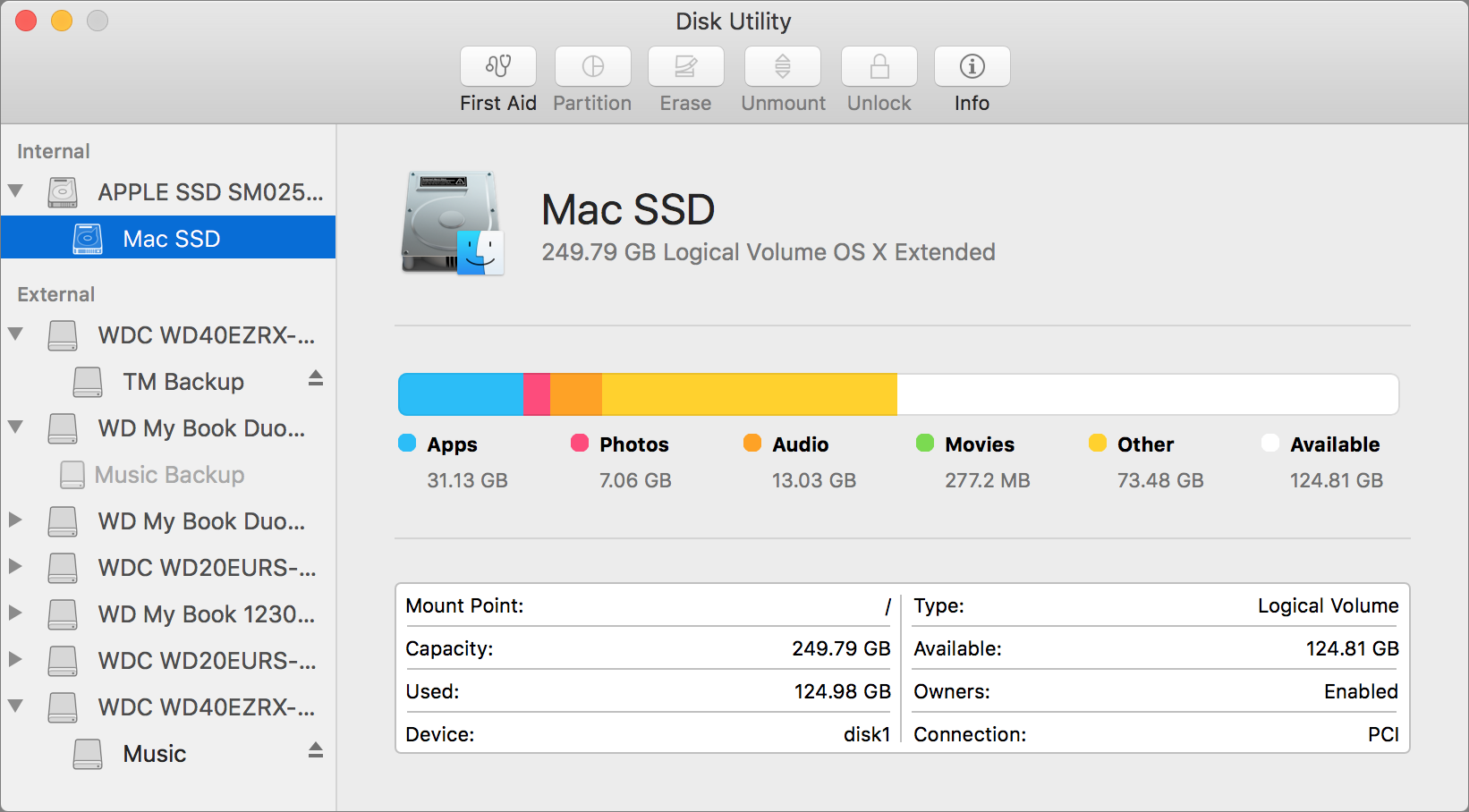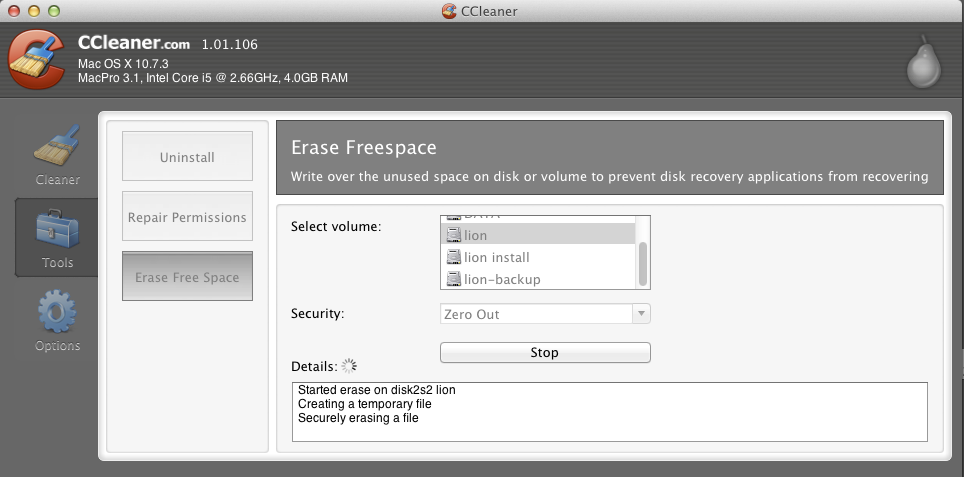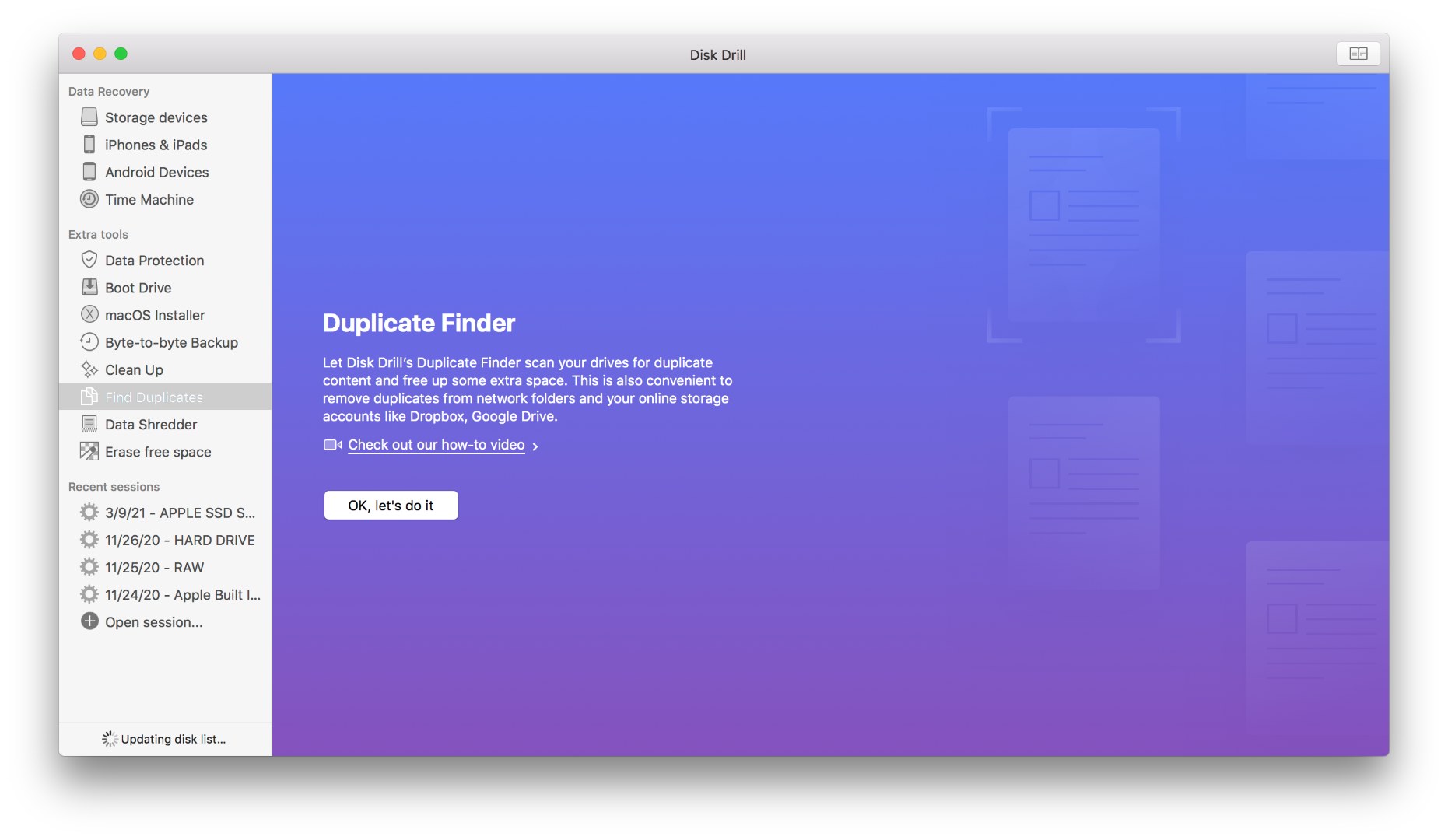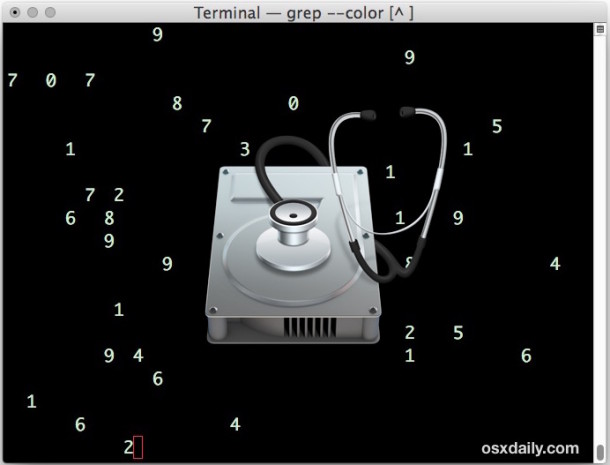The option to erase free disk space might be disabled on newer Mac systems. Screenshot by Topher Kessler/CNET Even with using specialized equipment, such a procedure would only increase the slim. Although the Disk Utility app of Mac OS X can erase free space on Mac hard drive, there is a chance that it might not be able to do so in a secure manner. To make sure that the erasing of the free space is completed without any damage to the hard drive then using a data erasure tool is the best option.
In some cases, such as lending your Mac to other people, you should make sure your sensitive data has been permanently erased. Now, many Mac users have installed the new Mac operating system – macOS 10.13 High Sierra. Some of them may need solution to securely delete files under macOS 10.13 High Sierra. In this article, we will guide you to permanently and securely delete files from macOS 10.13 High Sierra system.
File shredder for macOS 10.13 High Sierra
Most of us know that deleted or formatted files can be recovered by data recovery software after the trash bin is emptied. When you want to securely delete files under macOS 10.13 High Sierra, you should delete the files and overwrite the disk space of the deleted files to make data recovery impossible. macOS 10.13 High Sierra file shredder – AweEraser for Mac can easily help you do this job.
AweEraser for Mac is powerful Mac file shredder & disk wiper. It can permanently erase files/folders under macOS 10.13 High Sierra. This file shredder for macOS 10.13 High Sierra can securely delete files and overwrite the disk space of deleted files to prevent the files from being recovered. Before you sell your Mac, donate your device or lend your Mac to other people, you can use this file shredder to permanently delete your files.
Securely delete files under macOS 10.13 High Sierra
First step: download and install AweEraser for Mac on your Mac computer, then launch it. You will three data erasure solutions, 'Erase Files', 'Erase Hard Drive', 'Erase Free Space', click 'Erase Files'. Then select or add the files/folders you want to erase, click on 'Erase' button. AweEraser for Mac will permanently delete and erase the selected files/folders. You can securely delete files from Mac hard drive, USB flash drive, memory card, digital camera and other storage media under macOS 10.13 High Sierra.
Once your files is securely deleted by AweEraser, they would be permanently lost, can't be recovered by any data recovery method. So, this is the secure way to permanently delete files under macOS 10.13 High Sierra. If the wrong data falls into the wrong hands, the consequences would be unimaginable. It is strongly recommended to securely delete your files under macOS 10.13 High Sierra before you give you Mac to other people. It is also supports macOS Sierra, OS X 10.11, 10.10, 10.9, 10.8 and 10.7.

File shredder for macOS 10.13 High Sierra also can help you wipe hard drive, erase free disk space under macOS 10.13 High Sierra. This is comprehensive data erasure software for macOS 10.13 High Sierra. It means it can help you wipe all data under macOS 10.13 High Sierra or erase already deleted data on your Mac hard drive.

Related Articles
The limitations of Mac storage often create a problem that prevents the Mac from running smoothly, which results in inconvenience to every user. With that said, we take a look at the four ways to free up the storage space on the device manually, according to Apple.
How to Free Up Storage Space Manually on Your Mac
1. Store the contents of the device to the iCloud storage.
iCloud is an online storage service that enables Mac users to save their files and other data online. This is a safe and secure place for your files. It will save the files automatically after editing or modifying its contents. Also, a user can always check and access these files online, anywhere and anytime. All Apple users have a free 5 GB storage space in iCloud and can subscribe to more storage through monthly subscription
- To use the iCloud, go to the 'Apple menu'. After, you will see the option 'About this Mac.' Click it.
- Once you see this on the screen, select the 'Storage.'
- Then, click 'Manage.'
- Click the 'Store in iCloud' and it is done.

For documents stored in iCloud, you can always download these documents locally on your Mac anytime. For photos and videos, the iCloud will store full resolution images and videos. It can also save the messages and attachments.
2. Uninstall unused or unnecessary applications in the device.
Sometimes, there are unnecessary applications in the device that occupy spaces in the storage. To free up the storage, users can uninstall these applications.

Read Also: How to clean up your Mac quickly? Outbyte MacRepair's Guide
This can be done in three easy steps, per Tech Solutions:
- Choose the 'Finder' in the device's dock.
- Then, click 'Go.' After, browse the options, find and click the 'Applications.'
- After clicking it, it will show you all the applications in your Mac. Browse through the applications and choose those applications that are unused and unnecessary. To uninstall each application, drag the application's icon to the Trash icon that you will see in the dock. Continue doing this until you have uninstalled all the unneeded applications.
3. Empty trash
How To Wipe Free Space
The items in the Trash can also occupy space in the storage. There are two options you can choose from. You can manually empty the Trash once in a while or enable the feature that automatically and permanently delete all the items in the trash every 30 days.
- To delete manually, click the Trash icon in the device's dock. Browse through the items and delete the items that you do not need anymore. You can also select all and empty the Trash.
- To enable the feature that will automatically and permanently delete all the items in the trash every 30 days, follow the instructions in storing in iCloud above mentioned. However, this time, browse and choose the 'Empty Trash Automatically' and click 'Turn On...'.
4. Free up a large storage space on the Mac
You can use an external storage to help maximize the storage of the device. These external storage devices are: USB flash drives, external hard drive, SD or Micro SD card, and external port adapters. There are four steps to move the items from the Mac to an external storage device, per Business Insider.
- Check for an available port on your Mac device and plug the external storage device.
- After plugging it in, it will appear in the finder and the desktop of the device.
- Copy or move the items or files that you do not need currently and are often unused in the Mac.
- Lastly, after copying and moving the items in the external storage, delete all the original documents and other items in the Mac to free up storage.
Related Article: Mac Running Slow? Here Are 4 Tips to Help Improve Its Speed

© 2021 iTech Post All rights reserved. Do not reproduce without permission.
Secure Erase Free Space Mac
Sign Up for the iTechPost Newsletter
Erase Free Space Mac Terminal
Get the Most Popular iTechPost Stories in a Weekly Newsletter